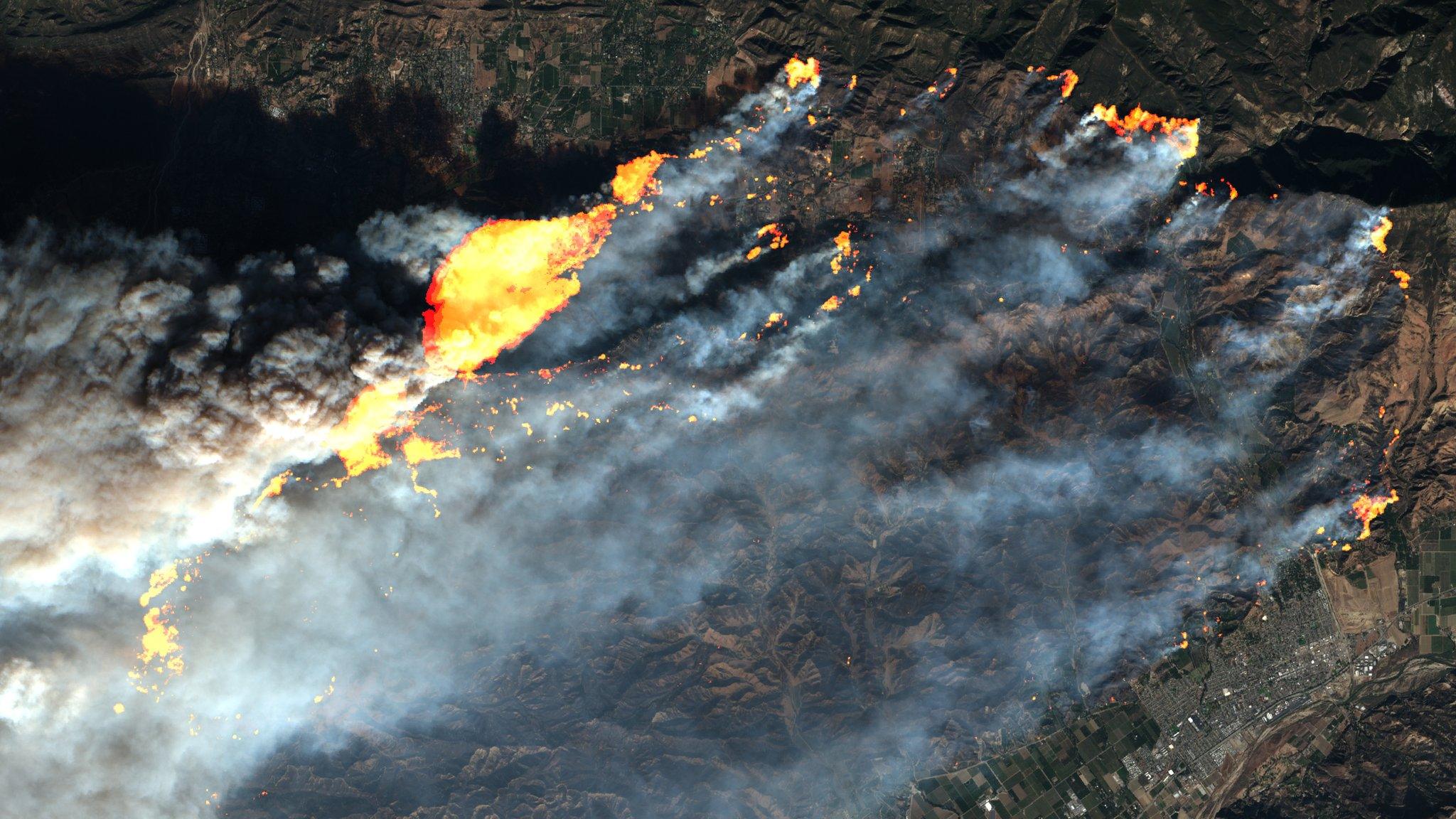California fires: Sentinel satellite tracks wildfire smoke plume
- Published
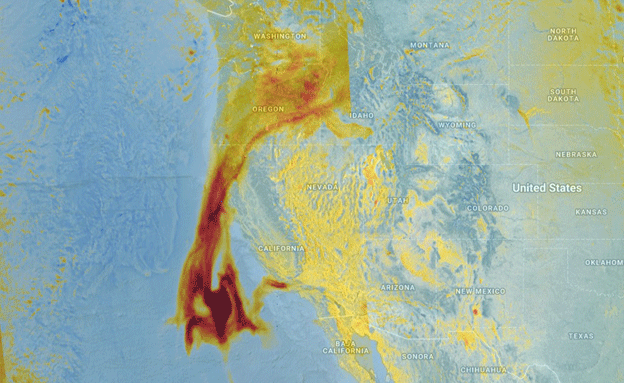
The smoke plume heads out over the ocean and then turns north
Europe's new Sentinel-5P satellite has captured a dramatic image of the smoke billowing away from the devastating California wildfires.
It is a powerful demonstration of 5P's ability to sense the atmosphere.
The plume is seen to sweep westwards out over the Pacific Ocean near Los Angeles and then turn north towards the State of Oregon.
The image, taken on Tuesday, was shown at this week's annual meeting of the American Geophysical Union, external.
It is the first time that data from the brand new UK-Dutch-built Sentinel has been presented at a research conference.
The long battle against California wildfires
The mission was only launched on 13 October and has been engaged in calibration ever since; full operational service is still some months away. When that happens, it will be combing the atmosphere for a suite of trace gases including nitrogen dioxide (NO2), ozone, formaldehyde, sulphur dioxide, methane, carbon monoxide (CO) - as well as aerosols like the smoke particles from the California fires.
All of these components affect the air we breathe and therefore our health. A number of them also play a role in climate change.
But even though the Sentinel and its Tropomi instrument are still in a test phase, the sample data that is being acquired suggests the European spacecraft will be an extremely powerful tool for monitoring our planet.
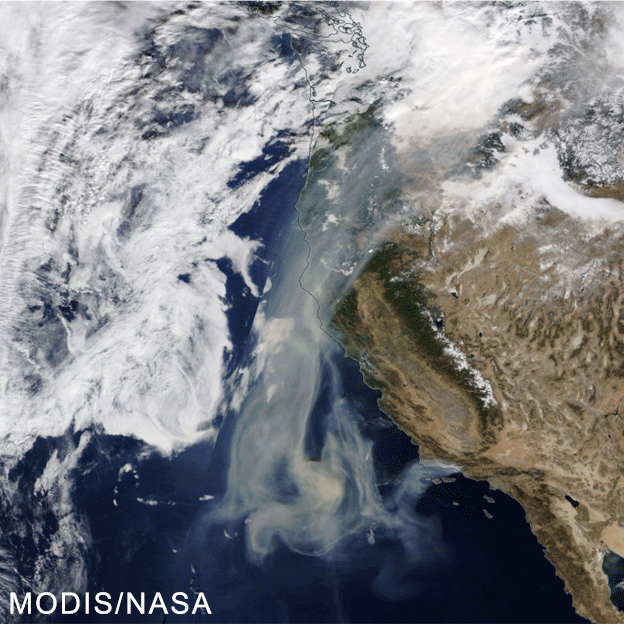
In this image, the plume is not so easy to discern over clouded areas
Pepijn Veefkind, from the Netherlands Met Office (KNMI), is the principal investigator on Tropomi.
He described the wildfires image to the AGU meeting.
He compared it with a picture from another satellite to show how the new instrument could pick out clearly, in ultraviolet light, the details of the aerosol plume, even over cloud.
Dr Veefkind then presented Tropomi's view of the same scene featuring emissions of NO2 and CO.
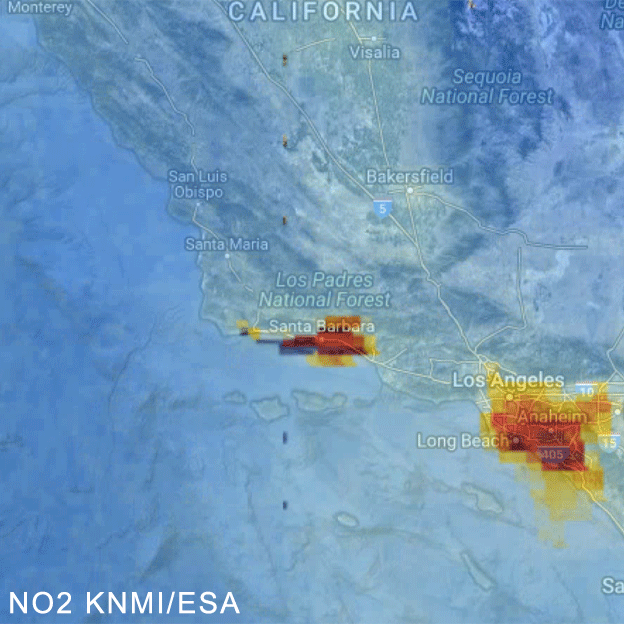
Nitrogen dioxide is seen concentrated over the fires and the urban centre of Los Angeles...
Both the fire region, in the counties of Ventura and Santa Barbara, and the city of Los Angeles display elevated levels of nitrogen dioxide, but only the fire region has raised carbon monoxide. The contrast is explained by the different sources of the nitrogen dioxide, which - in the case of the metropolitan area - is principally from vehicle exhausts.
"So far, the Tropomi instrument is working really well. We have to remember we are only 63 days into the mission, and to be able to present these results is fantastic," Dr Veefkind told the meeting.
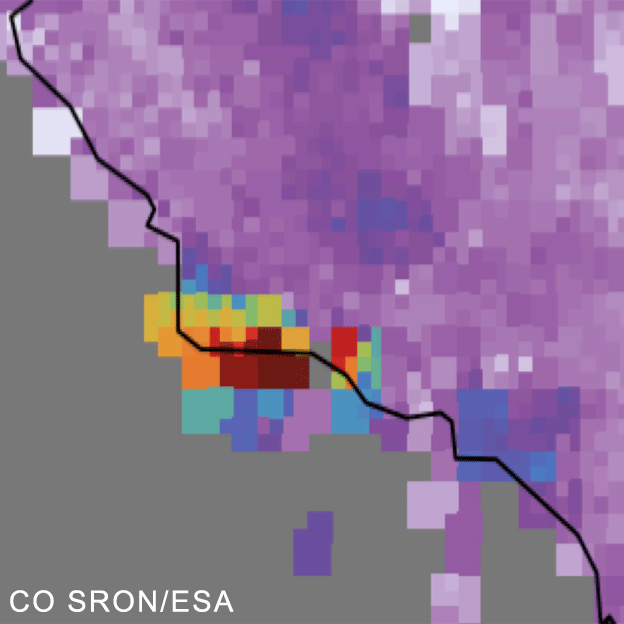
...but the carbon monoxide is far more prevalent over the fires
Sentinel-5P is the latest spacecraft in a fleet of Earth observers being commissioned by the European Union and the European Space Agency.
The bus, or chassis, of the spacecraft was assembled by Airbus in the UK.
It represents Britain's most significant industrial contribution to the Sentinel programme to date.
More than 90,000 residents have been displaced by the California fires, which have been burning for more than a week.
Some 100,000 hectares have been consumed, destroying hundreds of properties.
The wildfires have become the third largest in recorded state history.
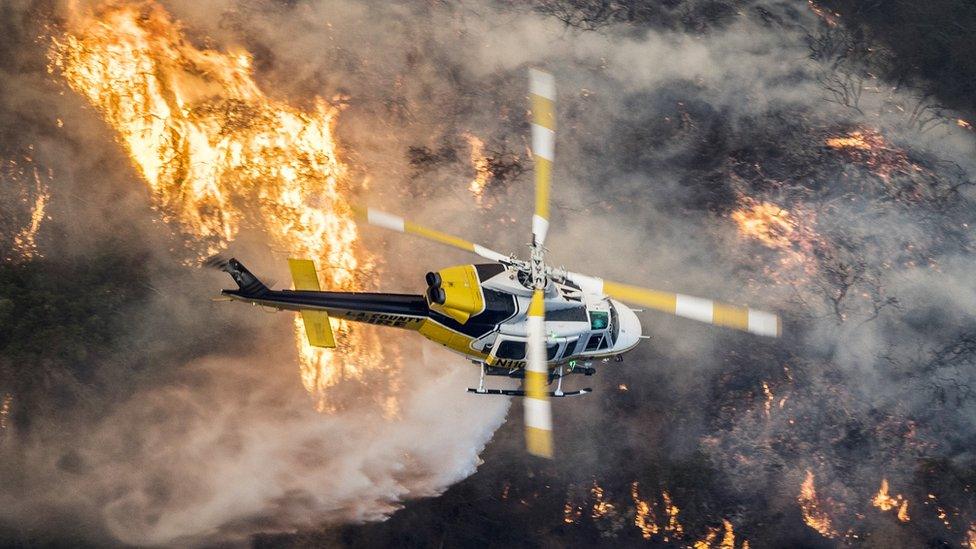
Jonathan.Amos-INTERNET@bbc.co.uk, external and follow me on Twitter: @BBCAmos, external
- Published13 December 2017
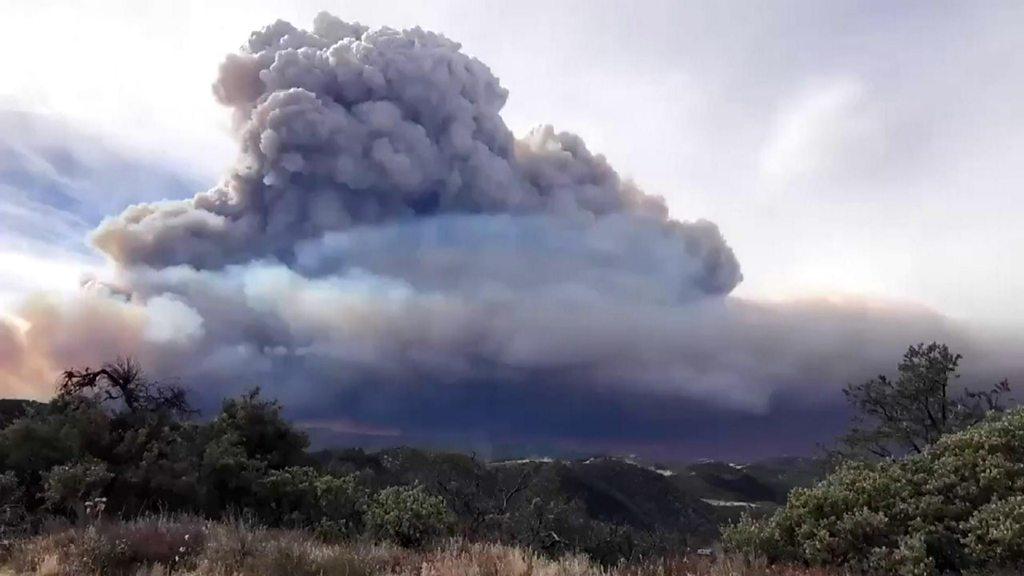
- Published10 December 2017
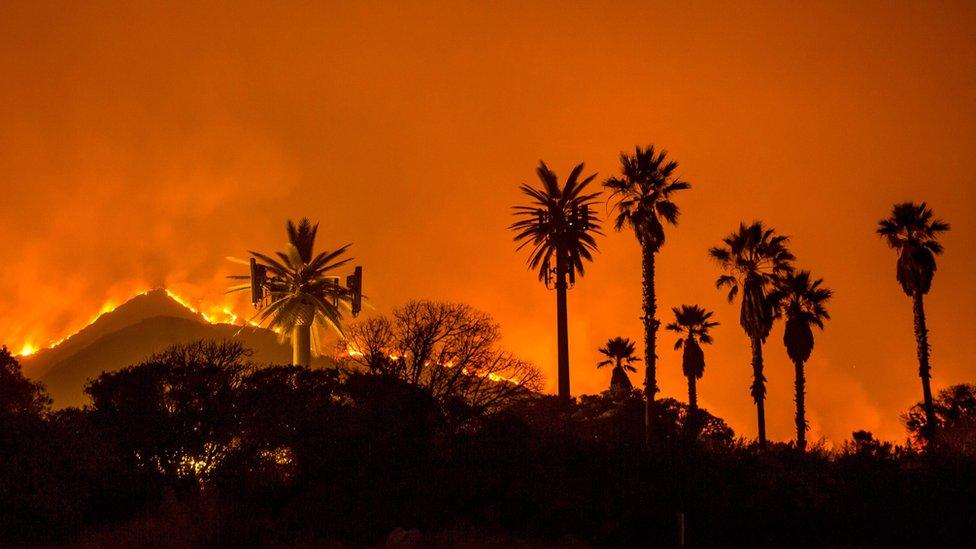
- Published8 December 2017
